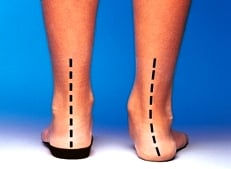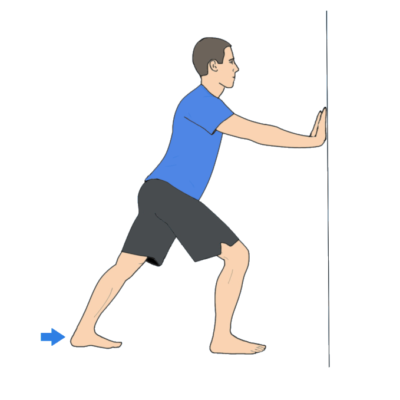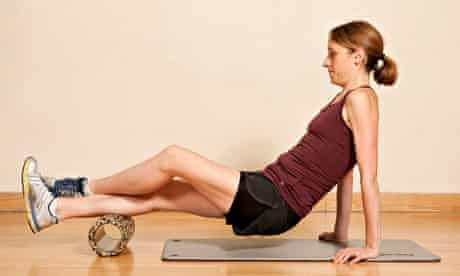Sever's Disease Treatment
- Eclipse Wellness

- Apr 5, 2022
- 7 min read
Updated: Jul 3, 2023
Sever’s Disease
Sever’s Disease refers to an irritation of the growth plate on the calcaneus or heel bone. It is pictured in the image below courtesy of the American Academy of Orthopaedic Surgeons.

The irritation occurs due the achilles tendon pulling on the growth plate of the calcaneus. Growth plates are cartilaginous areas of the bone where growth occurs to allow for lengthening. Growth plates typically close once puberty ends and you are no longer growing. The achilles tendon is the insertion of the calf muscles (the gastrocnemius and soleus) into the calcaneus. It is the largest tendon in the body and is responsible for transferring force to allow plantarflexion to occur. Plantarflexion is the raising of our heels, similar to what you would see in a heel raise exercise.

What Causes Sever’s Disease?
Sever’s Disease is typically caused by a growth spurt. During growth spurts, our bones grow quickly and our muscles struggle to keep up. This can lead to growing pains in some cases, but it also puts tremendous stress on tendons that connect muscles to bones. The calf muscles are typically tight, so increased tightness from a growth spurt can lead to pain. Interestingly, Sever’s Disease can occur in only one leg.
Tightness of the calf muscle prior to a growth spurt may put you at increased risk of suffering from Sever’s Disease. I will discuss exercises to address calf tightness later in this post, but limited calf mobility may be one of the manageable factors leading to Sever’s Disease. Obviously growth spurts cannot be predicted and modified, so other physical characteristics should be addressed.

High impact activities can worsen symptoms. Basketball is typically a very demanding sport due to running and jumping at high speeds. This stresses the achilles tendon more than longer distance running that involves less spikes in force. Also, basketball is played on a hard surface and shoe selection is important. Well-cushioned shoes can provide more support to the foot and ankle, decreasing stress on the achilles tendon. Sever’s Disease is commonly exacerbated at the start of basketball season due to a sudden increase in activity, particularly if it accompanies a growth spurt.
Ankle and foot mechanics can also play a role in stress on the achilles tendon. A flat foot can lead to more irritation of the tendon based on the foot structure as shown below courtesy of canadianfootclinic.com

The right foot demonstrates more stress on the inside of the ankle, leading to uneven force on the growth plate. Walking in this pattern periodically can lead to calf tightness and subsequent joint restrictions in the ankle due to poor mobility with each step. Instead of stretching the calf with each step, imagine rolling your foot inwards to limit pain and stretching. This leads to greater tightness, causing a feedback loop that can be difficult to exit. It is important to study standing and walking posture in cases of Sever’s Disease.
Sever’s Disease Diagnosis
Diagnosing Sever’s Disease is relatively simple based on several factors. The first key symptom is pain at the base of the achilles tendon. The pain should be localized to the heel bone where it connects to the achilles tendon. Compression of the area typically worsens the pain as does stretching or vigorous exercise such as running or jumping. Pain can be worse first thing in the morning due to increased calf tightness while lying in bed. Image below is courtesy of pediatricfootankle.com

Often someone dealing with Sever’s Disease will walk with a limp, particularly if the pain is worse on one side. They will also typically walk on their toes to avoid painful pressure through the heel along with calf stretching. Pain will also be worse while walking barefoot or with shoes with minimal support. Finally, they will have stiffness in the affected calf along with pain from a calf stretch.
A thorough history is important during a physical examination to determine if the patient is undergoing a growth spurt or had a significant change in activity intensity leading up to the pain. Sever’s Disease can reoccur multiple times, so it can be beneficial to ask about previous incidences of pain and their cause.
Imaging is not very beneficial for Sever’s Disease. X-rays can help rule out other issues such as a fracture in the foot. An MRI can reveal some inflammation, but it is often not necessary for a diagnosis.
Sever’s Disease Rehab
The ultimate goal of rehabilitation from Sever’s Disease is to manage activity and aggravating factors. Relative rest may be necessary to allow for healing to occur and a decrease in inflammation. A plan should be created early in physical therapy that can allow for gradual reintroduction of more aggressive activities. There may be setbacks during the process, so it is important to be flexible with return to play timelines.
Sever’s Disease is due to a growth spurt, so resolution of symptoms can come with an end to the rapid growth. There is no concrete timeline for how long it takes for muscles to catch up to bone growth and decrease symptoms. It can be beneficial to educate patients on the fact that the pain and symptoms will not last forever.
For temporary relief, non-steroidal anti-inflammatory drugs (NSAIDS) can be beneficial. You should consult your physician regarding the safety of taking the medication. They can temporarily decrease inflammation at the growth plate. Other factors need to be addressed, but the medication can provide some relief.
Shoe selection should be addressed, as supportive shoes with a greater cushion can be helpful. Also, a heel cup to elevate and cushion the heel can provide relief. Elevating the heel decreases tension on the achilles tendon and growth plate, allowing for inflammation to decrease. Gradual calf stretching should be incorporated as the heel cup is not a long-term solution, but it can play a valuable role. In extreme cases, a walking boot may be utilized to eliminate most movement at the heel and allow for prolonged rest. This can lead to greater calf tightening, but it will typically provide short-term benefit.
Sever’s Disease Stretches
Stretches are crucial for treatment of Sever’s Disease, particularly calf stretches. Unfortunately, most people perform calf stretches incorrectly. I prefer my clients to stretch their calves in a standing position while holding onto a wall as pictured below courtesy of fixflatfeet.com

The key to focusing the movement on the calf is to turn the toes of the back foot to face your front foot. This should turn the foot slightly inward. You also want to keep your weight on the outside of the foot. This prevents your foot from collapsing and negating the stretch. When performed correctly, you should feel a significant calf stretch with much less motion required.
Another useful technique is to stretch the calf while mobilizing the ankle joint. As I mentioned before, the ankle joint can stiffen due to decreased use, which exacerbates the symptoms. A set up like the one below courtesy of theprehabguys.com is ideal. The band should be placed where your ankle folds to stretch, and it should provide a moderate pull. This helps move the talocrural joint, which is the primary joint for ankle mobility.

Using a foam roller on your calf muscles can also give temporary mobility to the muscles as pictured below courtesy of theguardian.com

The pressure causes the muscle to relax temporarily which makes other exercises more effective.
Manual therapy can be useful to improve mobility of the calf muscle. Trigger point dry needling can allow for significant improvements without stressing the achilles tendon or growth plate. The needles target trigger points in the muscle that create restrictions and allow for the muscle to twitch and relax after prolonged guarding due to pain and abnormal movement patterns.
Sever’s Disease Treatment Exercises
Stretching should not be the only exercise focus with Sever’s Disease. Strengthening is crucial to allow for muscle relaxation and improved flexibility along with building resilience to future injuries. Basic heel raises from the ground are an excellent starting point. They can be progressed to include dropping the heel off of a step to allow for greater range of motion and stretch of the calf as tolerated.

Deadlifts can also be an effective exercise to stretch the calf muscles along with strengthening the entire posterior chain in the back of the leg. Hip weakness can lead to ankle problems, and strengthening the gluteal muscles can be effective for decreasing force on the achilles tendon. Deadlifts can progress to single leg along with other activities to focus on dynamic foot stability and strengthening.
Finally, plyometric activities should be gradually reintroduced with greater landing forces as they can be tolerated. Box jumps can be an excellent starting point as there is less force through the leg due to minimal falling.

Depth jumps, where you jump off of the box, can be more stressful because more energy goes into the lower body from the higher fall. However, these are excellent exercises to include if returning to jumping such as basketball. A runner should gradually build up mileage along with performing plyometric activities to avoid overuse.
As always, if you are suffering from pain, nerve symptoms (numbness, tingling, or weakness), or anything else significant, please see a healthcare provider. This blog is meant to be educational and is not a substitute for medical advice.
Hopefully you learned something about Sever’s Disease and its symptoms and treatment. If you have interest in other foot/ankle injuries, check out our ankle page. If you found this blog helpful, please share it with someone. We hope to continue to grow and help people better understand how our bodies move and work. If you want to subscribe so that you don’t miss any other posts, click the sign in button on the top right of this page. Once you have created an account, click the drop-down menu in the top right next to your name and go to your settings page. Click the subscribe button next to “Blog Subscription” and you won’t miss any future posts! If you are in the Sterling, Virginia area and would like to work with me or you have any questions, please email me at danny@eclipsewellnessnova.com or follow me on Instagram or Twitter @drdannydpt.




Comments